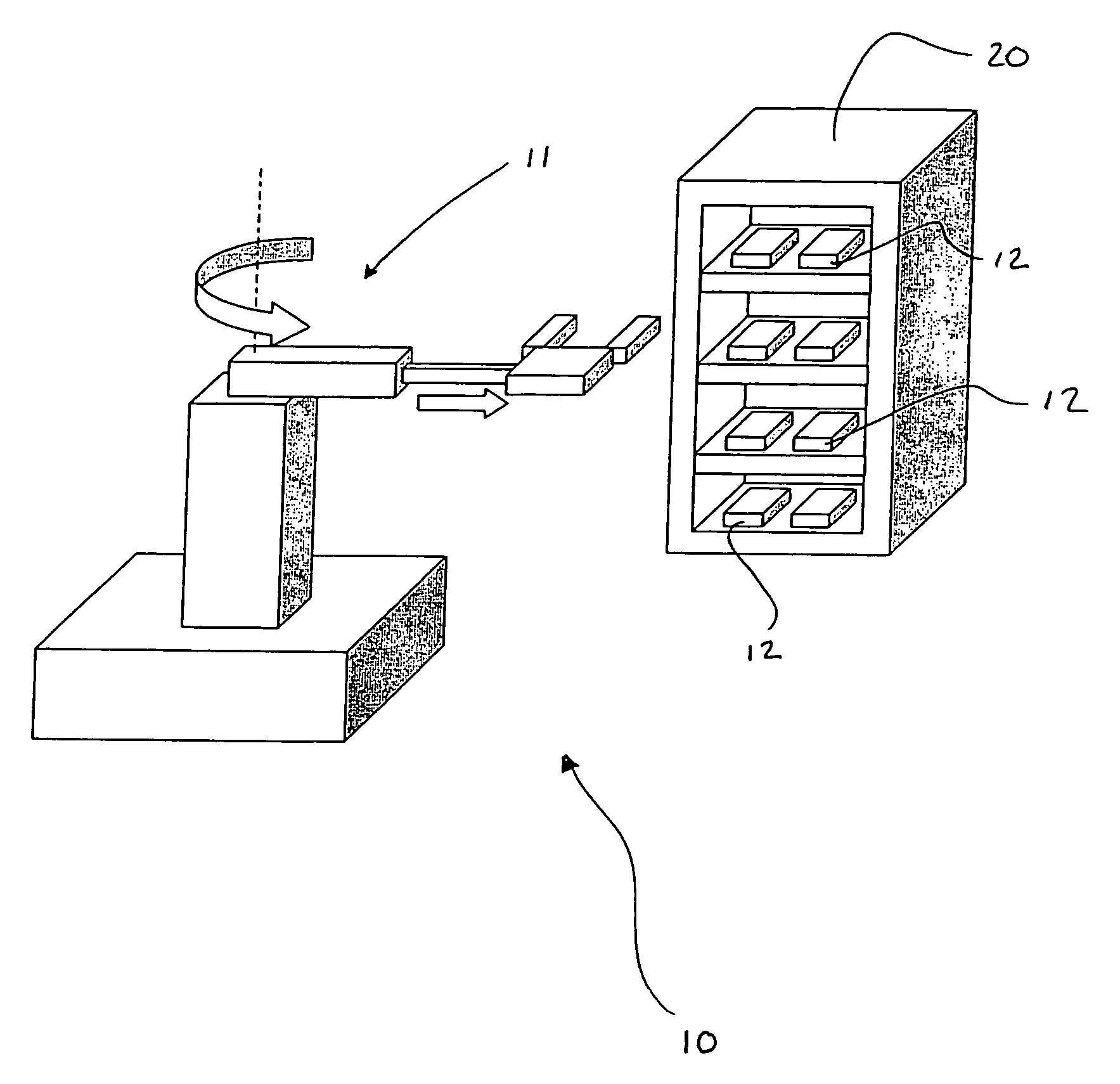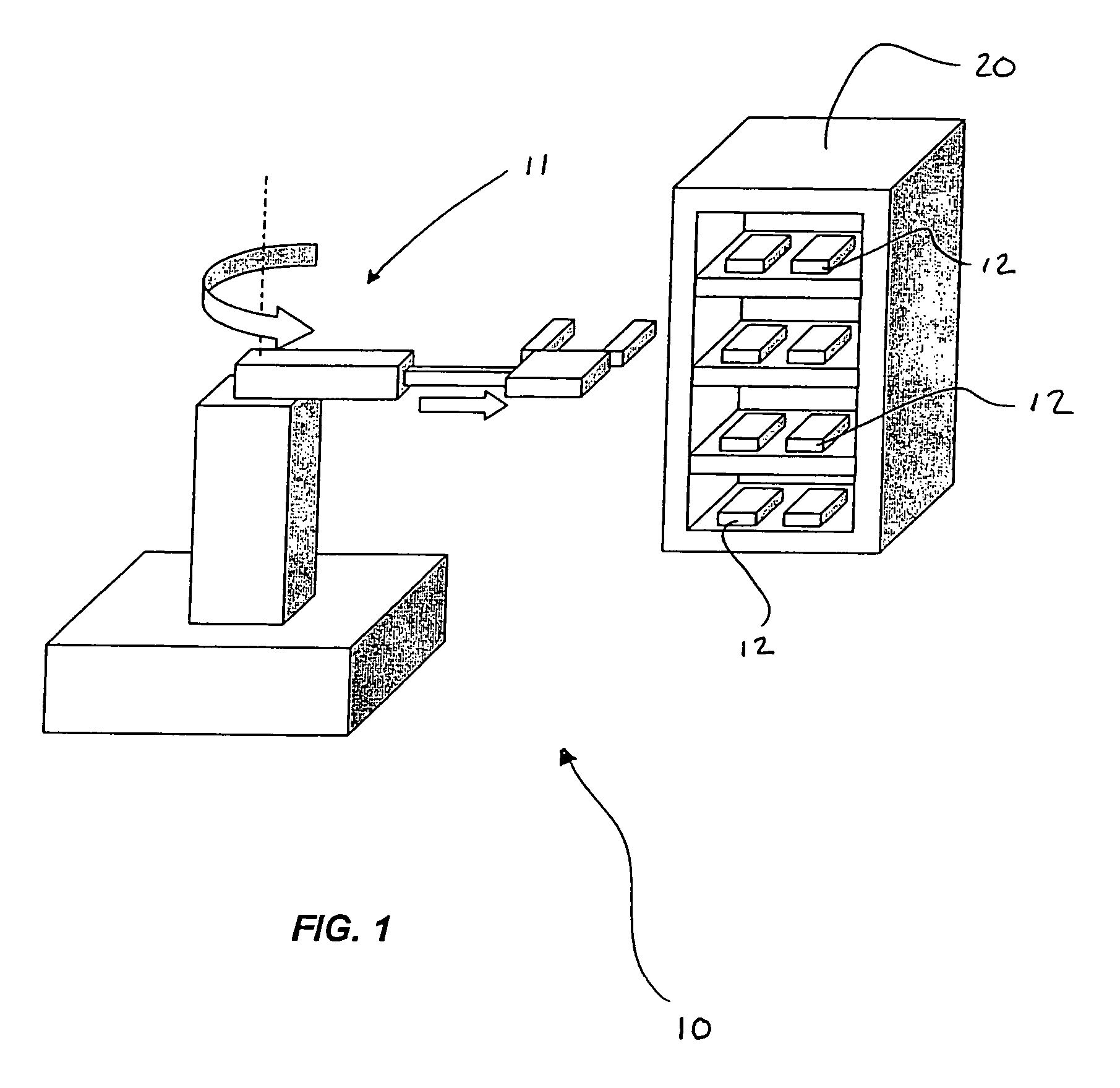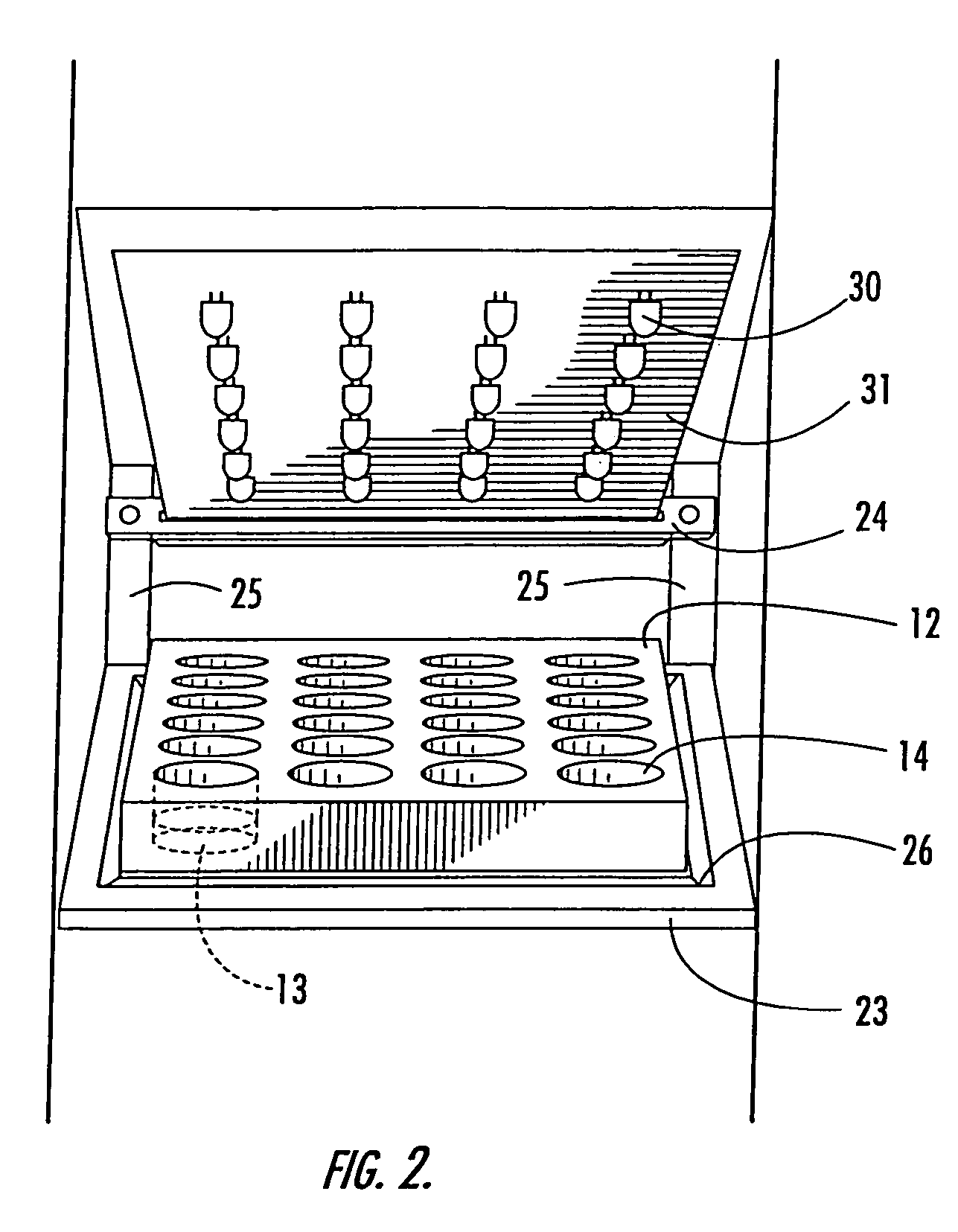LED array for illuminating cell well plates and automated rack system for handling the same
a technology of illuminating cell well plate and rack system, which is applied in the field of artificial lighting system, can solve the problems of limited vertical stacking capacity of the rack, incandescent or fluorescent lights are not very energy efficient, and limit the normal room with eight feet high ceilings to seven or eight shelves, etc., and achieves the effect of less heat, less bulky, and increased storage efficiency
- Summary
- Abstract
- Description
- Claims
- Application Information
AI Technical Summary
Benefits of technology
Problems solved by technology
Method used
Image
Examples
Embodiment Construction
[0020]The present invention now will be described more fully hereinafter with reference to the accompanying drawings, in which preferred embodiments of the invention are shown. This invention may, however, be embodied in many different forms and should not be construed as limited to the embodiments set forth herein; rather, these embodiments are provided so that this disclosure will be thorough and complete, and will fully convey the scope of the invention to those skilled in the art. Like numbers refer to like elements throughout.
[0021]In one embodiment, the present invention comprises a high throughput screening system 10 which includes a robotic system 11 for the automated manipulation of multiple well plates 12 housed in a high-density rack or hotel 20 wherein each of the multiple well plates contains a plurality of plant tissue samples 13, as shown in FIGS. 1 and 2. Above each of the well plates is an array of light emitting diodes (LED's) 30 supported by a circuit board or car...
PUM
| Property | Measurement | Unit |
|---|---|---|
| height | aaaaa | aaaaa |
| height | aaaaa | aaaaa |
| distance | aaaaa | aaaaa |
Abstract
Description
Claims
Application Information
 Login to View More
Login to View More - R&D
- Intellectual Property
- Life Sciences
- Materials
- Tech Scout
- Unparalleled Data Quality
- Higher Quality Content
- 60% Fewer Hallucinations
Browse by: Latest US Patents, China's latest patents, Technical Efficacy Thesaurus, Application Domain, Technology Topic, Popular Technical Reports.
© 2025 PatSnap. All rights reserved.Legal|Privacy policy|Modern Slavery Act Transparency Statement|Sitemap|About US| Contact US: help@patsnap.com



